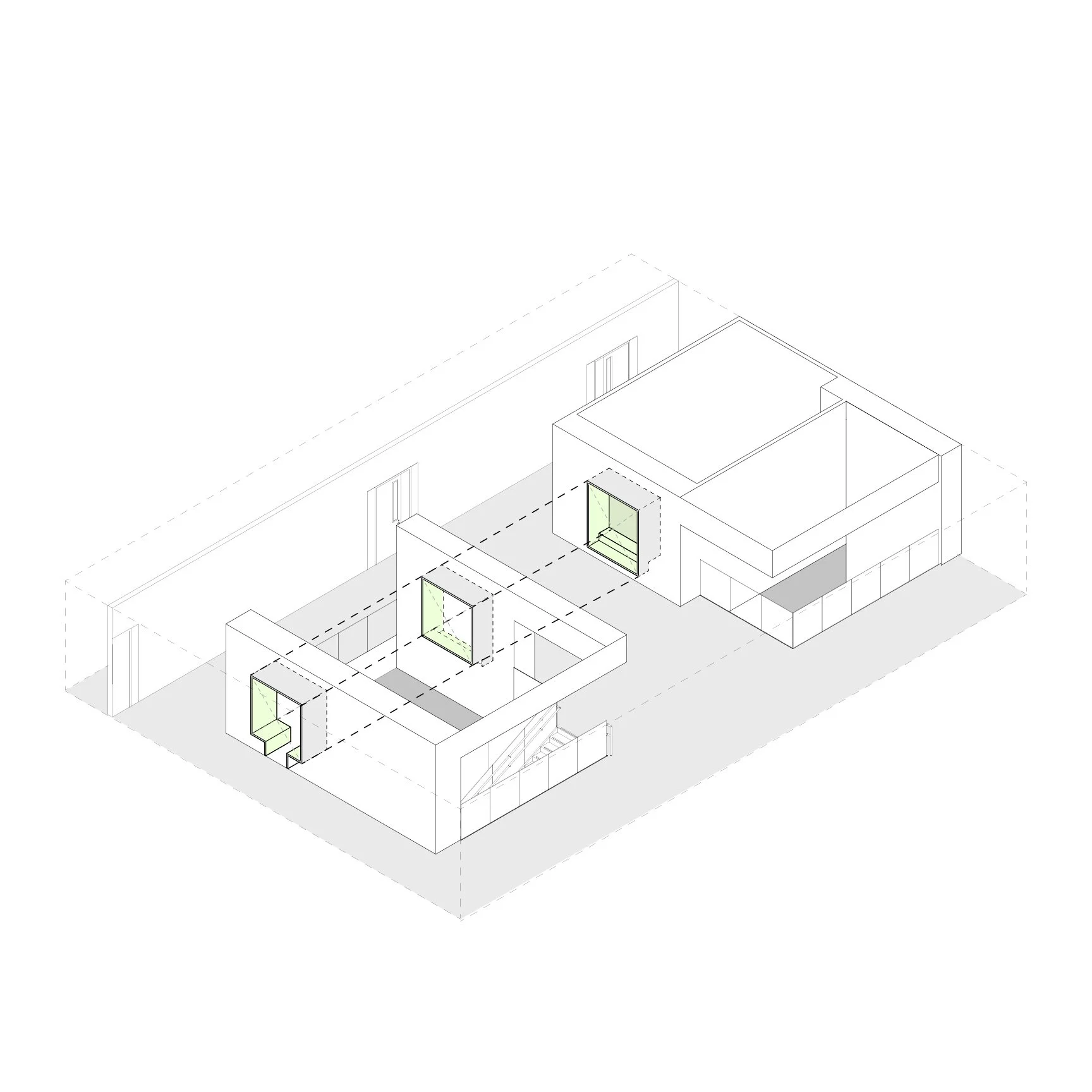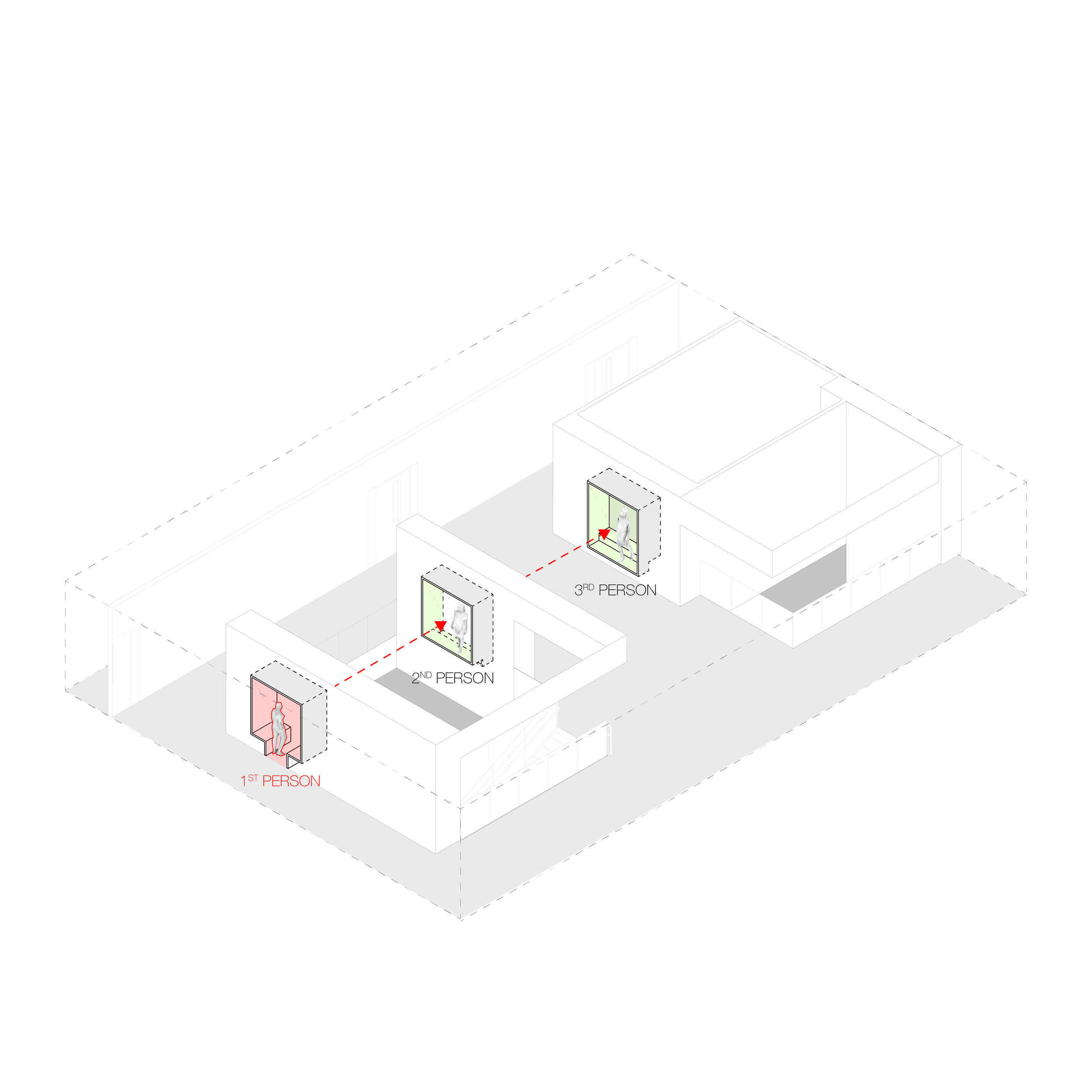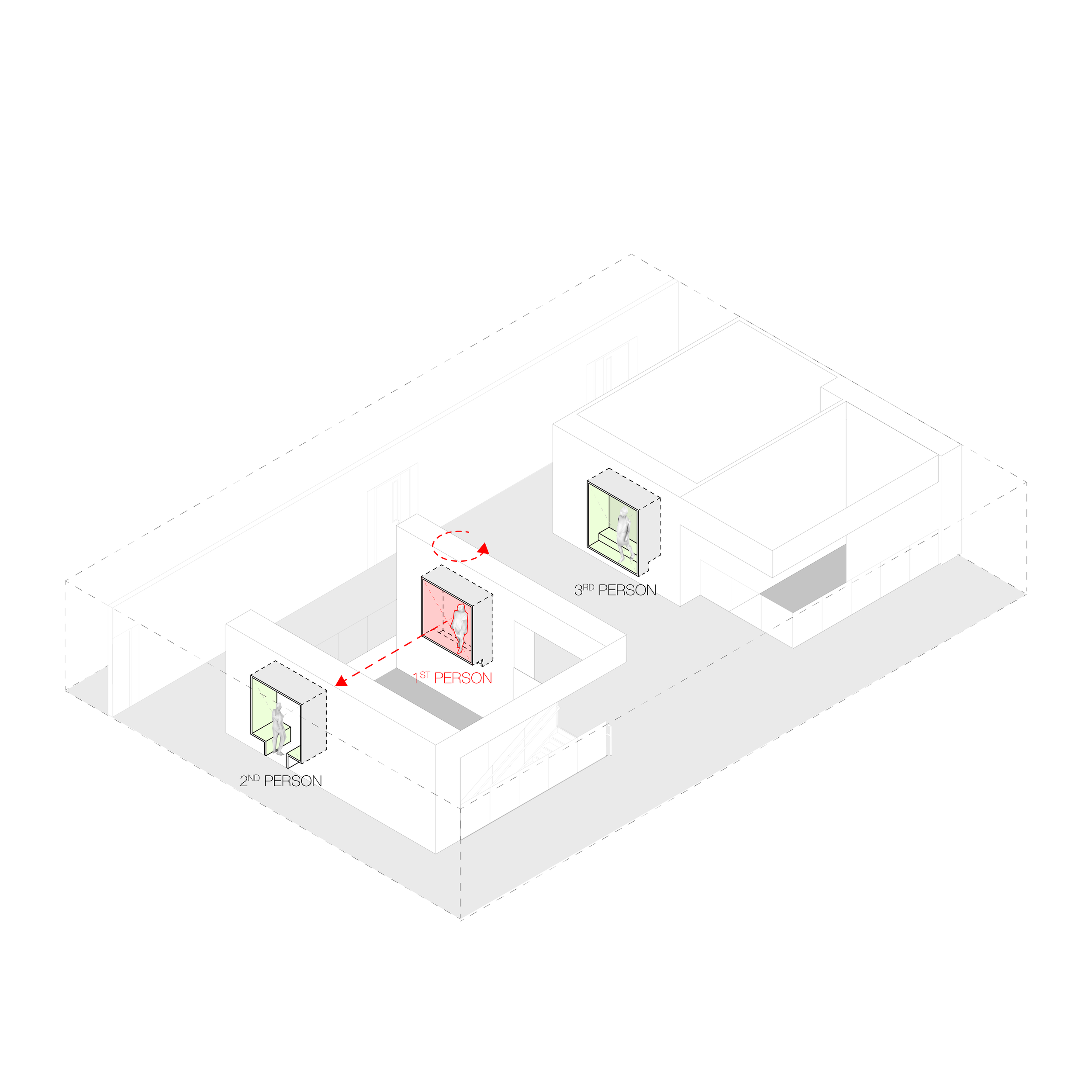Conjecture #01: Three Niches Conjecture
By Aybars Asci
Claim:
The “three niches” conjecture is a P-space construct that assists with the acquisition of deictic expressions with empathy in early childhood.
The three niches conjecture is constructed as follows: Define three deictic centers and locate them on the same perspectival axis, the positive and negative directions of each being parallel to the axis. On each deictic center, the vertical front-to back perpendicular plane of the person is visually framed with an identical or similar marker to achieve a visual echo. The framing elements should have conspicuous geometric, textural, and color similarities.
If the grammatical first person is located on the deictic center at either end of the axis, all the three personas can be subsequently located in the same direction. This type of arrangement for the P-space will result in the construction of second and third person for the L-space, and hence the perspective taking can be expanded to the [other] in the same directional axis.
If the grammatical first person is located in the middle, the second person is visible across, whereas the third person will be behind the first person, or toward the negative direction. The first person located in the middle will need to pivot to visually engage with the third person.
The forced perspective construct of the three niches conjecture creates three egocentric reference frames that align toward the same vanishing point The visual echo of each frame is intended to catalyze perspective taking for each individual, shifting the focus of spatial cognition to social interaction. In this specially choreographed P-space, which allows multiple perspectives in the same narrative, a shift from an egocentric frame of reference to an allocentric frame of reference is intended.


